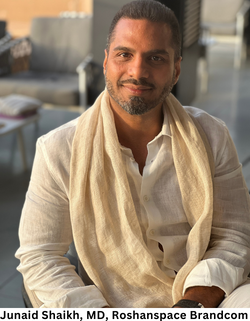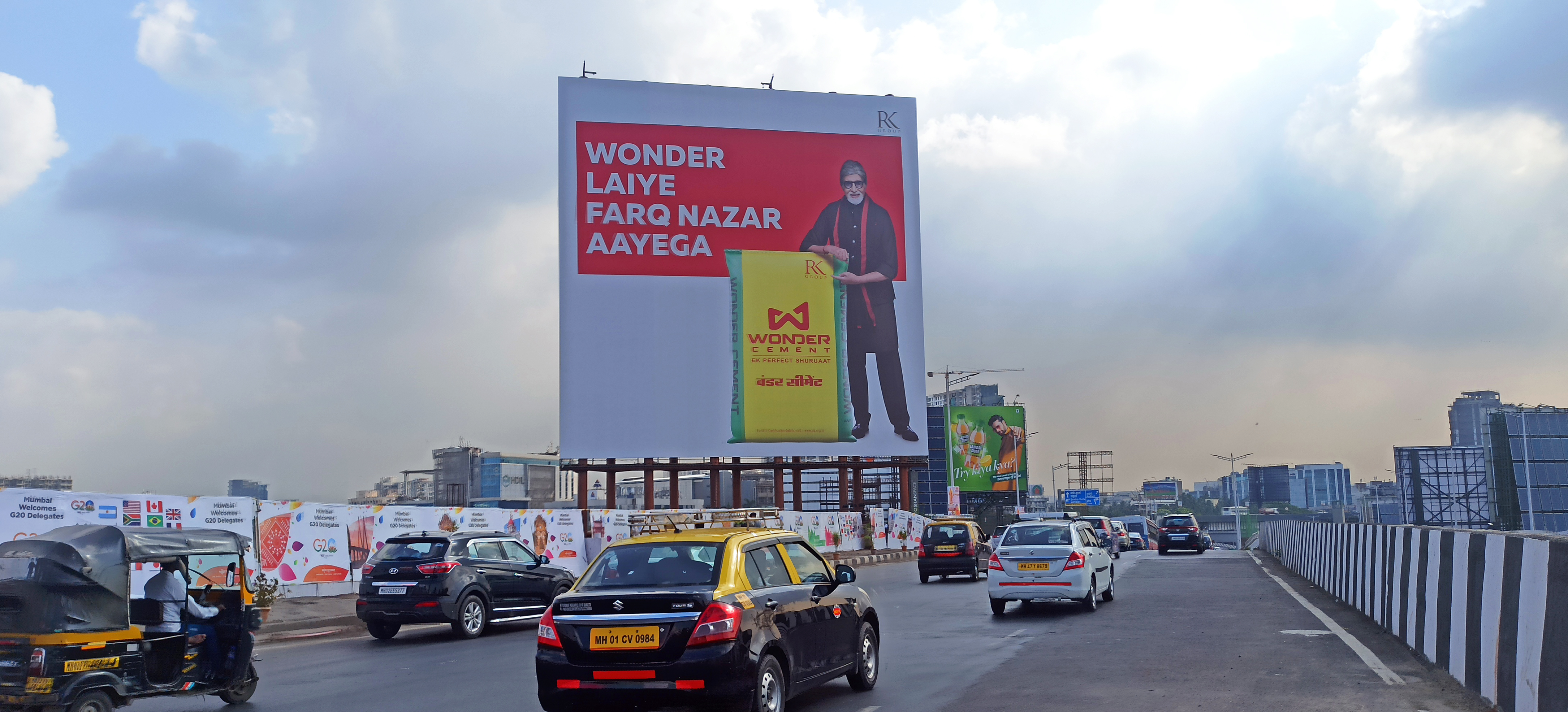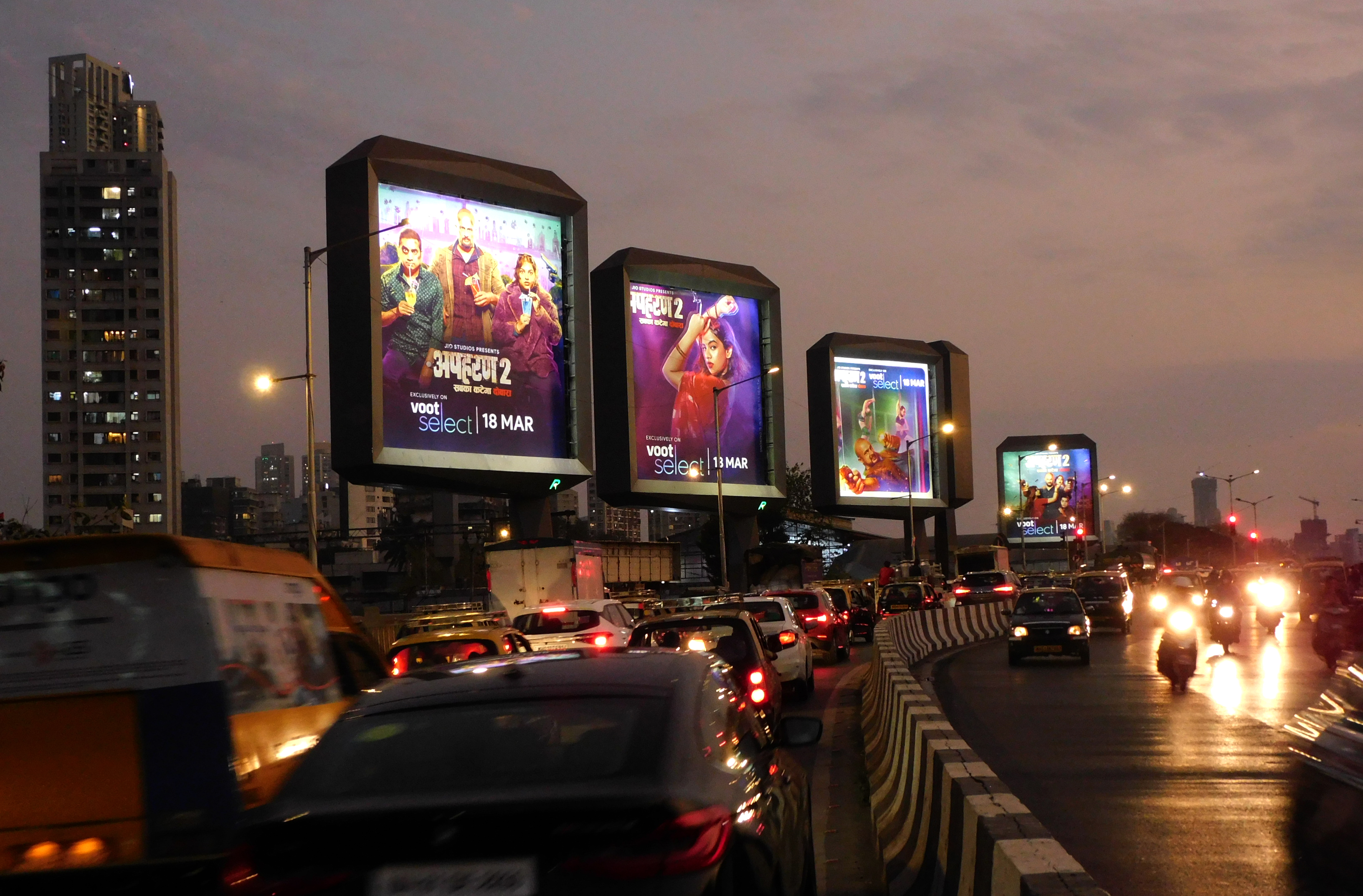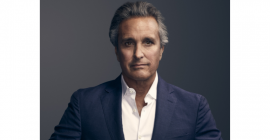‘Mumbai OOH has the potential to grow at 15% YoY’
By M4G Bureau - April 10, 2023
The future of OOH in Mumbai will be driven by audience measurement, ad tech and an increased interest in DOOH, says Junaid Shaikh, MD, Roshanspace Brandcom in an exclusive interview with Media4Growth.
 Mumbai is one of India’s largest OOH markets. As a media owner operating in this market, do you see scope for investments in OOH media assets in the city, or is there already an oversupply of media?
Mumbai is one of India’s largest OOH markets. As a media owner operating in this market, do you see scope for investments in OOH media assets in the city, or is there already an oversupply of media?
Mumbai has always been the powerhouse of India, in its capacity to purchase the most expensive real estate or to advertise on the most spectacular and iconic OOH and DOOH media assets. Most of which belong to us. Mumbai is home to some of the world’s richest individuals. It is also the heart of the entertainment and glamour industry. This city that never sleeps has an irresistible draw…whether it’s the vehicular traffic, the people in transit or the dreamers who arrive daily with stars in their eyes...this is the place to be.
Let’s talk about the traffic density in Mumbai. With the city’s road length being almost the same for nearly a decade—around 2,000km—the vehicle density per km has increased by 35% over the last seven years. From 1,400 cars/km in 2016/2017 to 1,800 cars/km in 2019. And considering the current infrastructure developments, this density is on a constant rise. People spend more time travelling, so it’s an advertisers dream to engage consumers on the move.
OOH in Mumbai has always been a trendsetter for the rest of the national markets. Up to 35% of OOH marketing budgets are parked here. Almost all global brands plan their footprint in India, starting from the financial capital. And most of them are launched on our iconic assets. Mumbai is also the most regulated OOH market in India. However, it still needs a lot of work compared to organised markets like USA, Australia, Germany. In the top 25 markets globally, India ranks at number 16, even though it has the largest population in the world. We must ask ourselves, why is this?
USA, Germany and Australia are no match to India in terms of population, but what have they done right to be amongst the top 10 markets? That’s the question, we need to answer collectively. There are lessons to learn from these markets where media owners have worked together to consolidate, to introduce tech innovations, and to make audience measurement a standard requirement. They have worked closely with the cities and the municipalities, to benefit the industry as a whole. A model that we need to follow here. They have also done it the hard way, over decades. But they tapped into the power of the potential of OOH as an industry body, with a clear vision and a tremendous support from all the stakeholders involved.
I see Mumbai as a huge sole market by itself, the 2nd most populated city in India according to MMR and the 9th most populated city in the world. The issues that plague our industry are fragmentation, a lack of vision and unity amongst the stakeholders. Whether it is the local authorities/licensing authorities or the media owners and media agencies. But the good news is that DOOH is here and with it most of the solutions. If you talk about investments and clutter, Yes, there is clutter but the industry is led by premium inventories. Launches of campaigns are postponed if the premium inventory is not available. The future of OOH in Mumbai will be driven by audience measurement, ad tech and an increased interest in DOOH. There is a great opportunity for growth in the upcoming infra projects, OOH being integrated into smart cities, and most importantly, real engagement and dialogue with the policy makers, to regulate the industry even further.
The need of the hour is landlords and licensing authorities diving deep into the business model of the OOH industry and creating policies that regulate the supply. And collectively focusing on increasing demand, and curbing clutter. Long term contracts are crucial if media owners are expected to invest in this.

More recently, one has seen large format DOOH being introduced in significant ways across the Mumbai streets, and in particular on stretches like the WEH. Do you see DOOH eventually taking the place of traditional large formats on Mumbai streets?
I would firstly like to clarify here that DOOH is not just about viewing a screen, that’s changing ads. Or a screen that may have the brightest light shining and the content played on it is like a newspaper ad. OOH or DOOH is not a medium to read paragraphs. It is a medium that is silent. It is large and the most powerful reminder medium, in 6 seconds. Short and succinct.
Let me give you an example of how Apple uses this medium. Apple iPhone has been showcasing the ‘Shot on iPhone’ campaign with multiple ad changes, since almost 3 years. And today, Apple is a brand that has the strongest recall in the world. It invests only in premium and iconic OOH media. We may think that by just installing a digital screen, revenues will start flowing? I am sorry to break it to you, but it’s a BIG NO.
DOOH is way more complex than just adapting a print ad on a digital medium. For DOOH to be used to its highest potential, everything from the screen to the content, the tech, media buying and selling, audience data, the aesthetics of the media to the quality and durability of the screens … the entire knowhow at the back end will have to be streamlined. So, my answer to the question is that while DOOH is here to stay if it’s not done right, it will have an adverse effect. An entire ecosystem is required and along with it the right policies for DOOH regulations. Involvement and engagement of creative teams from the client, agencies and the media owners is a must.
Globally the trends are that 10%-15% of DOOH contributes to around 50% of the revenue. But the question in India is, are we ready to complement the medium by bringing in the art and the science? Well, it’s going to be a gradual journey. We are about 20 years behind the organised markets, but we are also highly adaptable where it comes to tech. It is our endeavour at RoshanSpace to spearhead this revolution.
The future is digital and it’s dynamic. Various new technologies for OOH advertising make a debut daily. There may come a time when you don’t need a structure at all. Advertising may just become virtual reality or projected in the air.
How would you assess the role of the municipal body Brihanmumbai Municipal Corporation in streamlining and augmenting OOH media investments in the city, and are there are any regulatory concerns that you believe need to be addressed?
The municipal corporation in Mumbai has recently introduced a policy, which was a revision to the 2008 policy. While they have favoured DOOH and opened up several other revenue streams for themselves, there hasn’t been much attention given to the basic fundamentals of OOH, which is visibility. The 100 meters distance criteria has been reduced to 70 meters. That itself is going to create adversity and visible clutter. Beautification and aesthetics of the city are going to be further affected by the reduction of distance between two billboards. I urge the municipal authorities to review the policy and try to match it to global standards. Less is more.
We have case studies of huge markets where they have focussed more on OOH becoming a part of the beautification of the city. Public welfare, smart city integration and beautification efforts working in tandem have generated incremental revenues, while adding to the aesthetics and the experience of living in the city.
Do you see more advertising brands using OOH in the city, and how has been the occupancy level of your media over the last one year?
Since the pandemic, we have tripled our inventory and we have grown three-fold. The occupancy has been gradual and consistent. The brands have become more conscious about the fact that investing in landmark and premium locations has a much better return on investment, in terms of recall and impact.
Since 2020, we have introduced several industry firsts. Whether it was Bandra Focal, the tallest standalone billboard in Asia at 180 feet; Edge 7, a revolution in the aesthetics of Mumbai OOH landscape; or, Prodigi, our DOOH network of 20 flagpoles on the Western Express Highway. We have about 15 larger format premium DOOH projects in the pipeline, scheduled to be completed by the end of this year. We’re constantly focused on the product development of our assets and ensuring that we give the brands the best possible stage to showcase their brands.
And yes, as a medium, OOH is the oldest form of advertising. It is silent, it is non-switchable and it is large. And now with DOOH coming in, it is also going to be dynamic and even more powerful. So, there is always going to be demand, subject to constant improvements in policy. Post the pandemic, there has been a general shift in the psychology of brands towards premium and high quality.
Do you get business directly from advertising clients, or how much of your business comes from national and regional specialist agencies?
Real estate, PSU and a few other local brands advertise with us directly. But since we offer premium iconic and landmark sites, most of our clients are the Fortune 500 global companies. We work with them through our partners that are some of the world’s most renowned agencies.

Adtech is in many ways changing the face of OOH/DOOH globally. Have you considered embracing the ad technologies for your business?
We have been doing our R&D on DOOH for more than five years. After thorough research, we have chosen the world’s best partners for our screens and for the tech on DOOH. And we have invested heavily on our systems at the back-end. And very soon, we are about to execute the ecosystem of showcasing our digital inventory. Also, bringing in qualitative measurement to our OOH and DOOH assets, for brands to take a more informed decision.
What could be total size of Mumbai OOH market, and how higher can it get in terms of size of business?
I would say the total size of Mumbai OOH could be around Rs 700-1000 crore. I think the potential for an increase is a minimum 15% YoY if the following happens:
- Policy and regulations that are focused on quality and curbing mere quantity and clutter.
- Standardisation of OOH media asset designs and structures.
- Investing in ad tech, in data and technology that is built around the qualitative measurement of assets, and following the consumer journey.
- Bringing in the fundamental standards of the science of online digital measurement to DOOH.
- Creating ideas and customised content for DOOH and traditional outdoor that can be integrated to social media platforms, to amplify the campaign globally.
- Media owners joining hands to consolidate and create a much more united approach towards the growth of the sector.
Join the most definitive OOH Platform here.

Stay on top of OOH media trends






_140_270.png)

